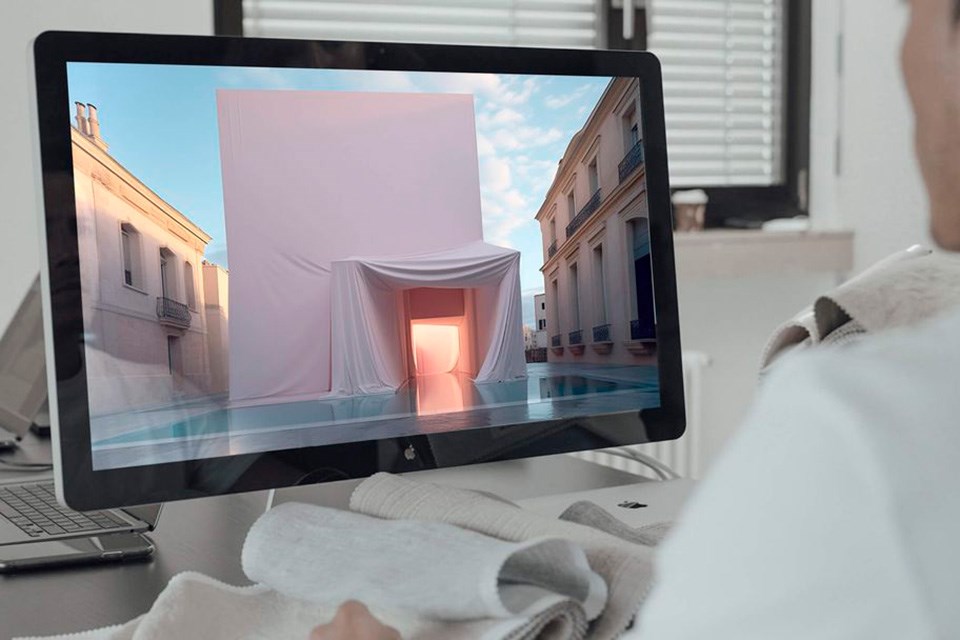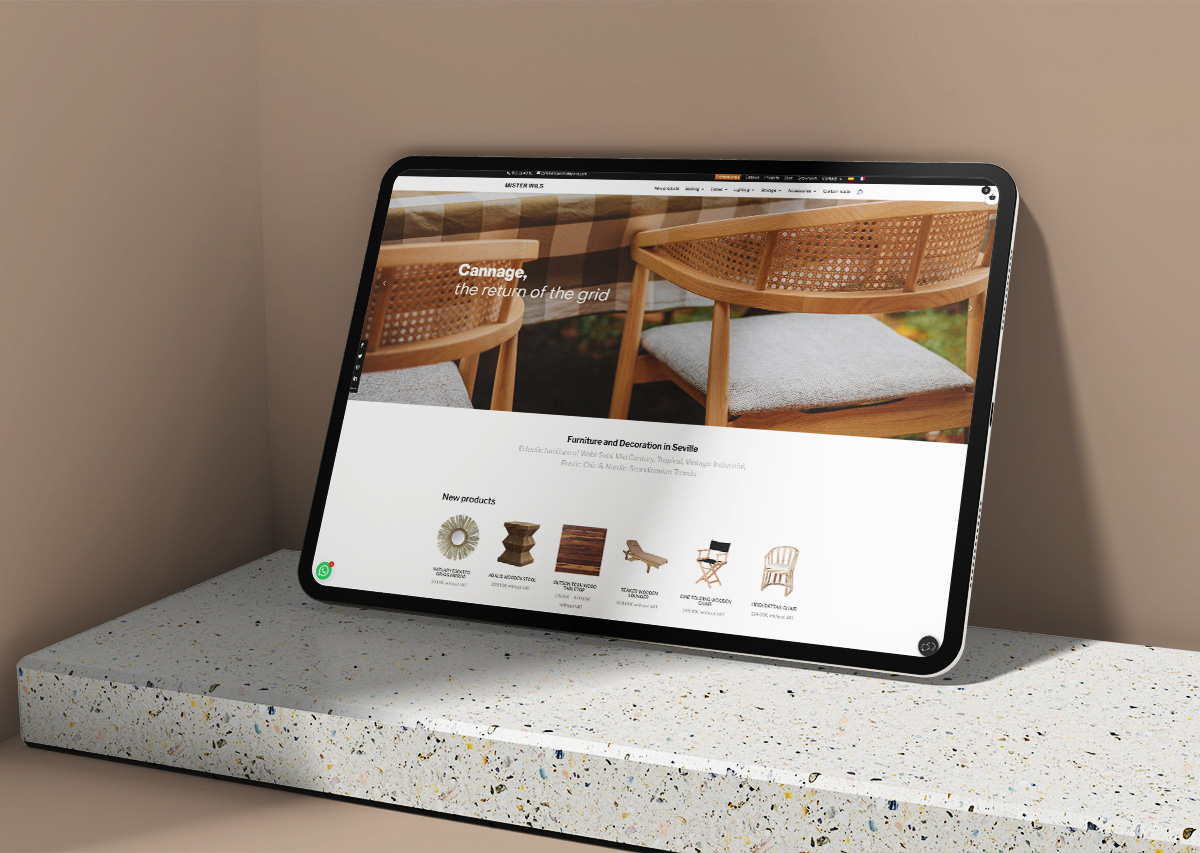Interior design is a discipline that seeks to combine functionality and aesthetics to create attractive and comfortable spaces. In recent years, artificial intelligence (AI) has emerged as a powerful tool that is revolutionizing the way designers approach their projects. In this article, we will explore how AI-assisted interior design is transforming the industry and enabling greater innovation and creativity in the field.
What is Artificial Intelligence assisted interior design?
AI-assisted interior design refers to the use of algorithms and machine learning techniques to assist designers in the process of creating interior spaces. These AI tools can analyze large amounts of data, such as client preferences, design trends, materials and architectural elements, and generate customized and visually appealing design proposals.
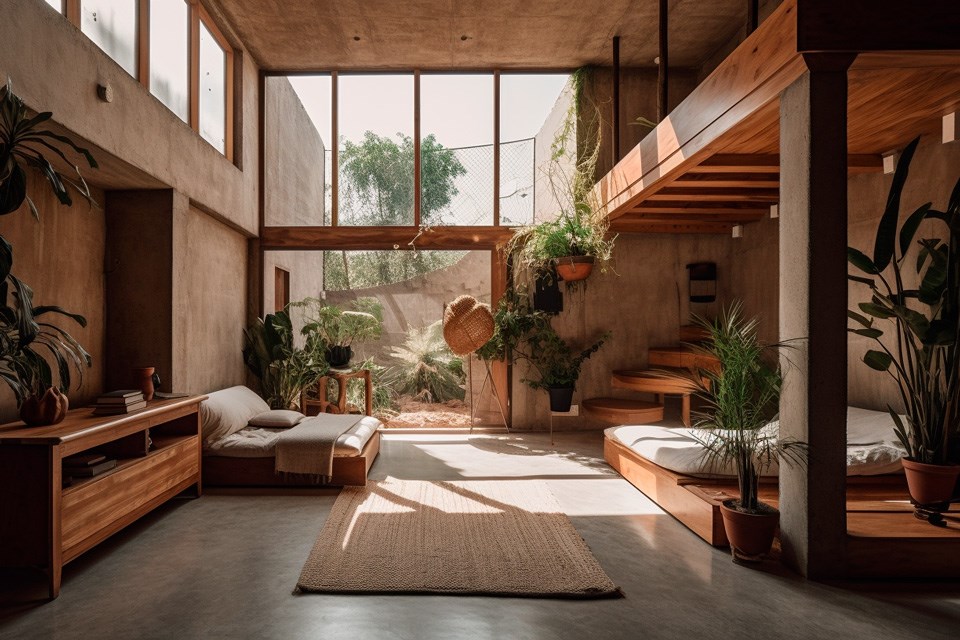
1. Generation of customized design proposals
One of the most prominent advantages of AI-assisted interior design is its ability to generate highly customized design proposals. Through analysis of data collected from clients, such as their style preferences, favorite colors, and specific space requirements, AI algorithms can offer design options that are tailored to each client’s individual needs and tastes.
These customized proposals can include different furniture configurations, color schemes, lighting and space layouts. Designers can use these proposals as a starting point and collaborate with clients to refine and adjust designs according to their preferences.
2. Space optimization and design flow
AI has also been used to optimize space and improve design flow in interior projects. AI algorithms can analyze the dimensions and characteristics of the space, as well as the specific needs and activities of the users, to maximize the functionality and efficiency of the design.
For example, in an office design project, AI algorithms can analyze people flow, furniture layout, and lighting to create a workspace that fosters collaboration, productivity, and employee well-being. This can involve the strategic placement of desks, meeting rooms and breakout areas, as well as optimizing natural and artificial lighting to create an optimal working environment.

3. Trend analysis and recommendations
Interior design is an ever-evolving field, with new trends and styles constantly emerging. Thanks to advances in artificial intelligence (AI), trend analysis and recommendations have become more accessible than ever. This allows designers to stay on top of the latest trends and offer their clients fresh, modern options. In addition, AI algorithms can also provide recommendations on materials, furnishings and accessories that match the preferences and style of each particular project.
Trend analysis is a crucial aspect of interior design. Designers are constantly looking for new ideas and approaches to create unique and appealing spaces. With the help of AI, designers can leverage sophisticated algorithms that analyze large volumes of data, such as images, social media posts and trade magazines, to identify emerging patterns and trends.
These AI algorithms can automatically analyze and classify images and textual content related to interior design. They can detect specific colors, shapes, styles and design elements that are gaining popularity at any given time. This information is valuable for designers, as it allows them to stay on top of the latest trends and get fresh ideas for their projects.

Algorithms that analyze historical data and behavioral patterns
In addition to trend analysis, AI can also provide personalized recommendations based on customer preferences and needs. By gathering information about customers’ tastes and requirements, AI can offer suggestions for products, materials and styles that match their individual preferences.
These recommendations are based on machine learning algorithms that use historical data and behavioral patterns to predict which options will be most suitable for each customer. This allows designers to offer personalized options tailored to their clients’ needs and tastes, which significantly improves the design experience.
For example, in a restaurant design project, AI algorithms can analyze people flow, furniture layout and lighting to create a space that promotes comfort, productivity or well-being for employees and customers. This can involve the strategic placement of kitchens, bars, dining rooms and storage areas, as well as optimizing natural and artificial lighting to create an idyllic environment.
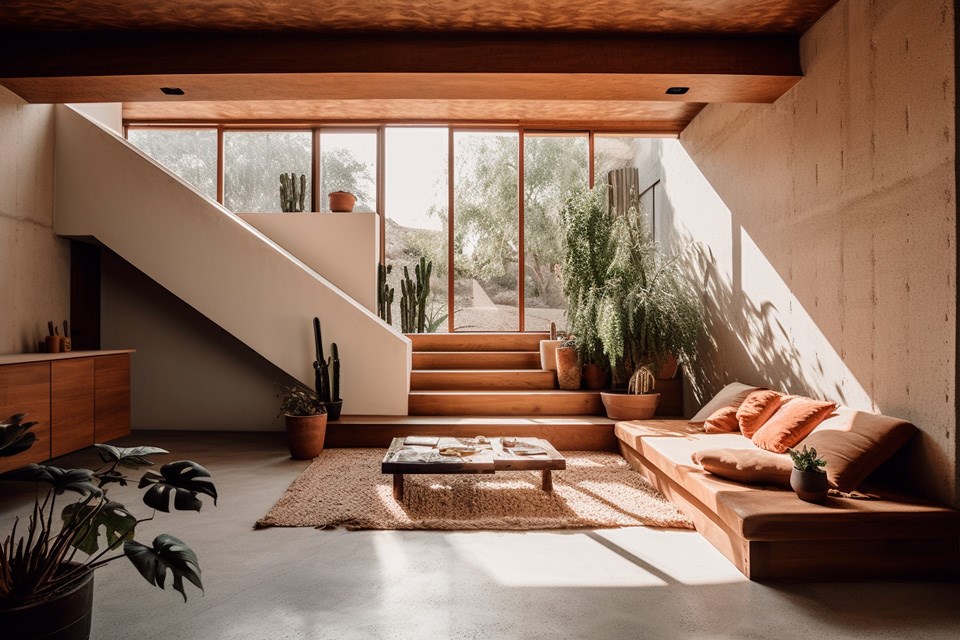
4. 3D simulation and visualization
In the world of interior design, the ability to visualize and experiment with different ideas is critical to creating unique and functional spaces. Thanks to advances in artificial intelligence (AI), 3D simulation and visualization have become powerful tools for interior designers. In this article, we will explore how AI is transforming the way 3D simulation and visualization of interior design projects is carried out.
3D simulation and visualization allow designers and clients to see what a space will look like before any construction or renovation work is done. Traditionally, this was achieved through hand-drawn sketches, 2D plans or physical mock-ups. However, with AI, a whole new world of possibilities has opened up.
AI algorithms can transform 2D models into realistic three-dimensional representations of spaces. This means designers can create 3D virtual models that allow them to explore different design options, play with space layout and try out different color and material combinations.

These 3D virtual models are especially useful in renovation projects, where designers must work with existing spaces. AI can scan the space and generate an accurate 3D model that designers can manipulate and modify as needed. This allows them to evaluate different design options and visualize how proposed changes will look before any physical work is done.
In addition to helping designers, 3D simulation and visualization also benefits clients. 3D models allow clients to see and better understand the designer’s vision. They can explore the space virtually, walk through rooms, examine details and get a clear idea of what the finished space will look like. This makes it easier to make informed decisions and ensures that both client and designer are on the same page.
AI can also improve the quality of 3D visualizations. AI algorithms can simulate lighting, textures and materials with a high degree of realism. This makes visualizations more convincing and helps clients get a more accurate idea of what the finished space will look like.

5. Efficiency improvement and cost reduction
Interior design is a complex process that requires time, effort and resources to achieve exceptional results. However, thanks to advances in artificial intelligence (AI), interior designers can improve efficiency and reduce costs in their projects. Here, we explain how AI is transforming the way interior design is conducted by improving efficiency and reducing costs.
One of the most prominent benefits of AI in interior design is its ability to streamline and optimize repetitive and tedious tasks. AI algorithms can automate processes such as bill of materials generation, budget creation and inventory management. This frees up time and resources for designers to focus on more creative and strategic tasks.
In addition, AI can assist in space planning and design. By analyzing 3D data and models, AI algorithms can suggest efficient space layouts and designs. This includes optimizing furniture placement, proper lighting and smooth circulation within the space. These AI-based recommendations allow designers to make informed decisions and maximize the use of available space.

AI can also be of great help in the selection of materials and finishes. AI algorithms can analyze data on the durability, cost and availability of different materials to provide recommendations that match the project requirements and budget set. This avoids the need to manually research a wide range of options and helps designers make faster and better decisions.
In addition, AI can optimize communication and collaboration processes in interior design. AI-based collaboration tools allow designers and clients to share ideas, comments and revisions in real time. This streamlines communication and avoids delays in the design process. AI can also help designers present their ideas and proposals in a visually stunning way, making it easier for clients to understand and make decisions.

Accurate budgeting through cost forecasting
Another significant benefit of AI in interior design is the ability to perform more accurate cost analysis and budgeting. AI algorithms can analyze historical data and pricing trends to predict costs associated with different project elements. This helps designers set realistic budgets and avoid unpleasant surprises during project execution.
AI is revolutionizing interior design by improving efficiency and reducing costs. By automating repetitive tasks, providing data-driven recommendations, and streamlining communication and collaboration processes, AI allows designers to focus on more creative and strategic tasks. As technology continues to advance, we can expect AI to play an even greater role in improving efficiency and reducing costs in the field of interior design.
The 4 apps of Artificial Intelligence applied to Interior Design that we recommend you

Midjourney
Midjourney is an independent research laboratory and the name of an artificial intelligence program with which its users can create images from textual descriptions.
Midjourney can only be accessed via a bot on its official Discord, by sending direct messages to the bot or by inviting the bot to a third-party server. To generate images, users use the /imagine command and type in a description or prompt, as in other AI art generation tools. For example:
/imagine photograph ultra realistc, extreme long shot, film grain, detailed materials, of a completely renovated old house with white walls and straight white roof typical of southern italy, small window openings
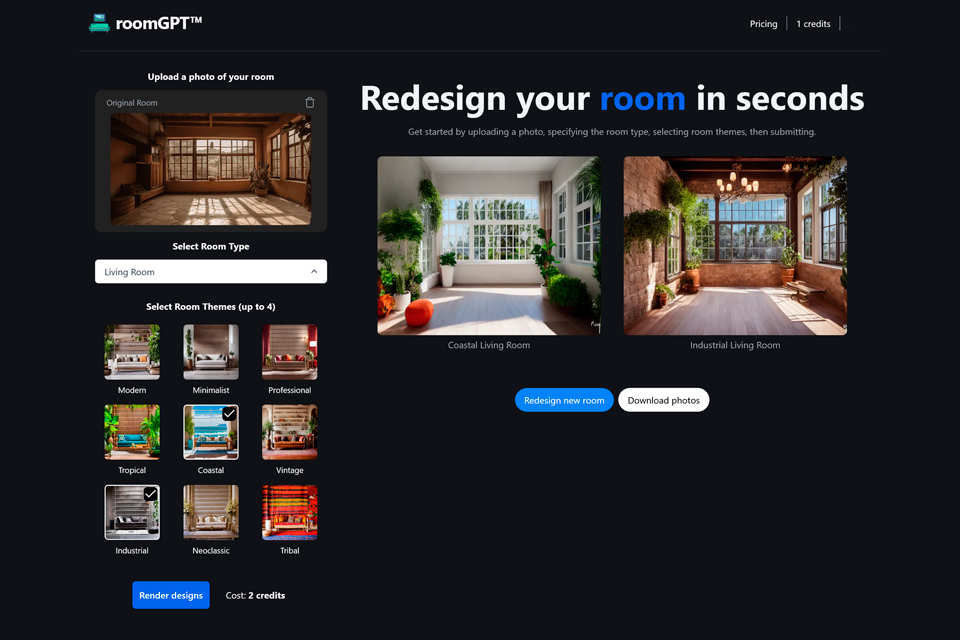
RoomGPT
RoomGPT is an online service that uses image generation algorithms to transform any room in your home into different decorative styles. With just a photo of the room you want to decorate and selecting a few options, this artificial intelligence algorithm will allow you to visualize the room with a new decoration in a matter of seconds.
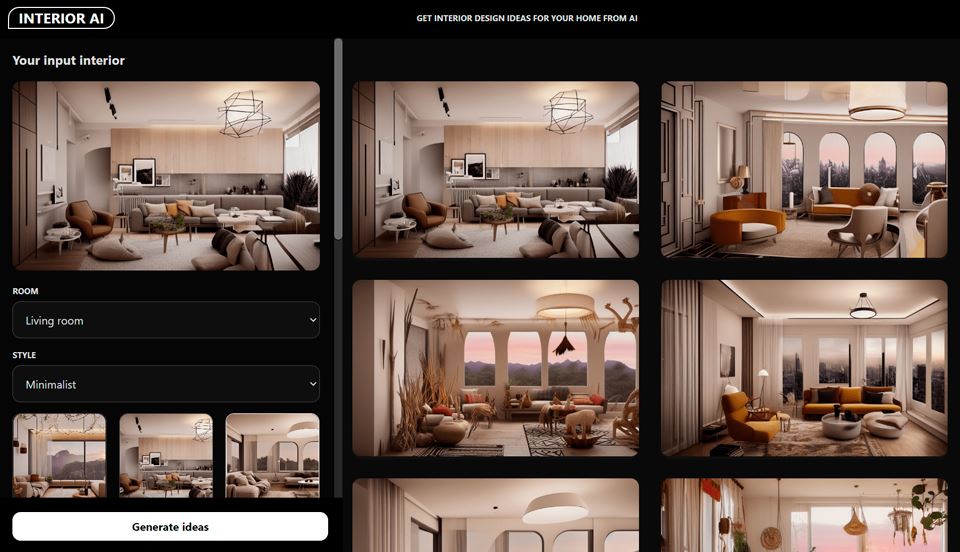
Interior AI
Interior AI is an artificial intelligence platform that helps users generate new styles and even new functions for their interior spaces. The program uses a 2D image of an interior space, either found on the Internet or a photograph taken by the user. This image can then be modified to fit one of 16 preselected styles. In addition, the program allows users to select a different function for the room.

Homestyler
Homestyler is a very easy to use app that will help you design the rooms of your home from real photographs. It also allows you to choose from many products from well-known brands. Homestyler offers realistic results and also has the option to generate spaces from pre-designed rooms.
Artificial Intelligence is here to stay, using it as a tool is a plus.
In conclusion, AI-assisted interior design is transforming the industry by providing tools and resources that expand creativity, optimize the design process and enhance the customer experience. AI opens up new possibilities in customization, space optimization, trend analysis and 3D visualization, allowing designers to create unique and functional spaces. As technology continues to evolve, we can expect AI-assisted interior design to continue to grow and improve, opening up new opportunities in the industry.
Follow us on Instagram
Are you decorating your spaces with MisterWils' furniture? Tag us on your Instagram posts so we can share it and keep inspiring our decolovers and interior designers network.

